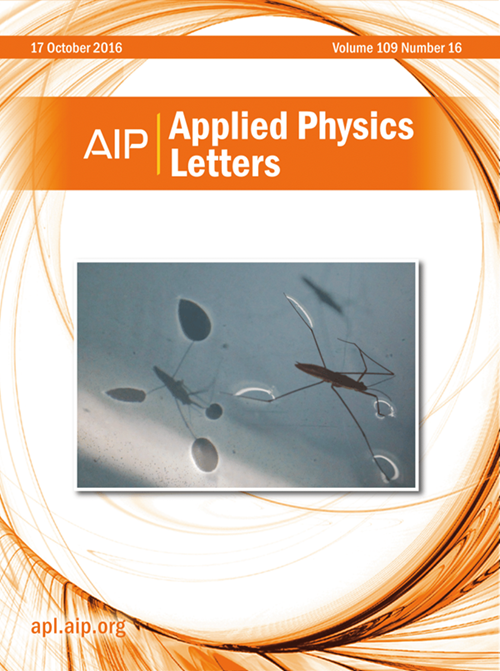Enhanced perovskite crystallinity via short-term ultraviolet irradiation
IF 3.5
2区 物理与天体物理
Q2 PHYSICS, APPLIED
引用次数: 0
Abstract
Despite the recent rapid development in the organic–inorganic halide perovskite solar cells (PSCs), the crystalline stability of the perovskite (PVK) material, particularly of the MAPbI3, remains a significant impediment to PSC applications. We proposed that short-term ultraviolet (UV) irradiation under air conditions can stabilize the PVK phase and increases the film crystallinity. Detailed investigations indicated that the electrons can be released from the bridging hydroxyls (OHB) bonds under UV irradiation to generate a small amount of active oxygen (O2−) on the TiO2 film surface, forming stable Pb–O bonds and α phase PVK. A 25% increases in photovoltaic conversion efficiency with a considerable stability, and the device maintains over 90% efficiency after 400 h of storage in N2. This study provides a simple and effective method to produce efficient and stable PSC devices at low cost.短期紫外线照射增强钙钛矿结晶度
尽管近年来有机-无机卤化物钙钛矿太阳能电池(PSCs)发展迅速,但钙钛矿(PVK)材料的晶体稳定性,特别是MAPbI3的晶体稳定性,仍然是PSC应用的一个重大障碍。我们提出在空气条件下短期紫外线照射可以稳定PVK相,提高膜的结晶度。详细的研究表明,在紫外照射下,电子可以从桥接羟基(OHB)键中释放出来,在TiO2薄膜表面产生少量的活性氧(O2−),形成稳定的Pb-O键和α相PVK。提高了25%的光伏转换效率,并具有相当的稳定性,并且该器件在N2中储存400 h后效率保持在90%以上。本研究为低成本生产高效稳定的PSC器件提供了一种简单有效的方法。
本文章由计算机程序翻译,如有差异,请以英文原文为准。
求助全文
约1分钟内获得全文
求助全文
来源期刊

Applied Physics Letters
物理-物理:应用
CiteScore
6.40
自引率
10.00%
发文量
1821
审稿时长
1.6 months
期刊介绍:
Applied Physics Letters (APL) features concise, up-to-date reports on significant new findings in applied physics. Emphasizing rapid dissemination of key data and new physical insights, APL offers prompt publication of new experimental and theoretical papers reporting applications of physics phenomena to all branches of science, engineering, and modern technology.
In addition to regular articles, the journal also publishes invited Fast Track, Perspectives, and in-depth Editorials which report on cutting-edge areas in applied physics.
APL Perspectives are forward-looking invited letters which highlight recent developments or discoveries. Emphasis is placed on very recent developments, potentially disruptive technologies, open questions and possible solutions. They also include a mini-roadmap detailing where the community should direct efforts in order for the phenomena to be viable for application and the challenges associated with meeting that performance threshold. Perspectives are characterized by personal viewpoints and opinions of recognized experts in the field.
Fast Track articles are invited original research articles that report results that are particularly novel and important or provide a significant advancement in an emerging field. Because of the urgency and scientific importance of the work, the peer review process is accelerated. If, during the review process, it becomes apparent that the paper does not meet the Fast Track criterion, it is returned to a normal track.
 求助内容:
求助内容: 应助结果提醒方式:
应助结果提醒方式:


